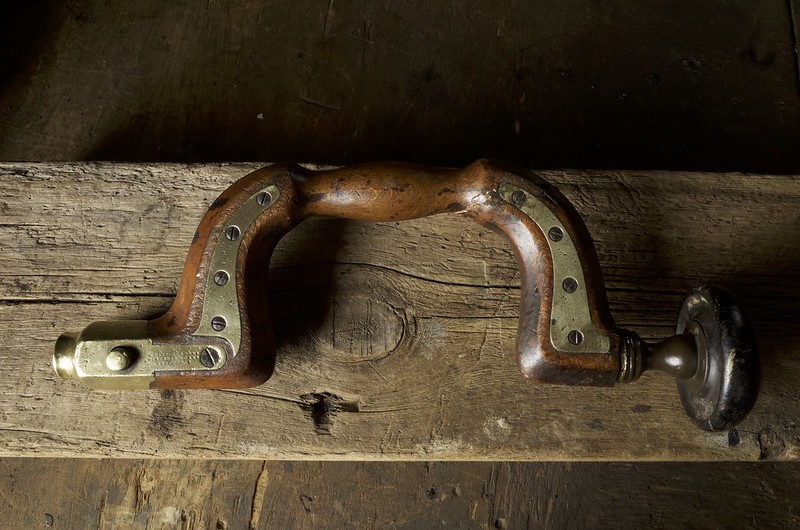Rhyolith
Established Member
Been casually keeping an eye out for these kind of braces for a while, least ones not going for £50+ as they usually seem to :shock: On my visit to the Norwich easter weekend Antiques fair I spotted this one in a pile of tools and ended up paying £20 for it, which seems like a good deal?
 Marples Brace by Rhyolith, on Flickr
Marples Brace by Rhyolith, on Flickr
I think its one step down from that ludicrously opulent "Ultimatium" brace. Generally a very pretty tool!
I am under the assumption its mid 19th century mainly due to the look of the thing, but don't have any references to back this up. Anyone help here? Apparently Marples was absorbed into record, so I assume this pre-dates that (1920-30s?).
 Marples Brace by Rhyolith, on Flickr
Marples Brace by Rhyolith, on Flickr
 Marples Brace by Rhyolith, on Flickr
Marples Brace by Rhyolith, on Flickr
I gave it a general clean up, wiping off the muck with a white spirited rag and brasso on the brass parts. The wooden parts got a once over with some linseed, which imposed the look beech considerable (it was all pale and blotchy when I go it).
It seems to have been glued at some point just behind the central handle (you can see this as a blotchy line in the top picture) and there is one screw missing, nothing major.
 Marples Brace by Rhyolith, on Flickr
Marples Brace by Rhyolith, on FlickrI think its one step down from that ludicrously opulent "Ultimatium" brace. Generally a very pretty tool!
I am under the assumption its mid 19th century mainly due to the look of the thing, but don't have any references to back this up. Anyone help here? Apparently Marples was absorbed into record, so I assume this pre-dates that (1920-30s?).
 Marples Brace by Rhyolith, on Flickr
Marples Brace by Rhyolith, on Flickr Marples Brace by Rhyolith, on Flickr
Marples Brace by Rhyolith, on FlickrI gave it a general clean up, wiping off the muck with a white spirited rag and brasso on the brass parts. The wooden parts got a once over with some linseed, which imposed the look beech considerable (it was all pale and blotchy when I go it).
It seems to have been glued at some point just behind the central handle (you can see this as a blotchy line in the top picture) and there is one screw missing, nothing major.




































